
Rubus leucandriformis – Series Sylvatici
back to Alphabetical index · Taxonomic index
A white-flowered species with strongly plicate leaflets, ovate terminal leaflet, distinctive notched and clawed
broadly elliptical petals, white-bordered sepals and a shiny stem. It is largely confined to central southern England, being found mainly on heathland margins (typically in open, sunny situations) across east Dorset, Hampshire and West Sussex. Although placed in the Sylvatici, it shares its appearance with some members of section Rubus and like those is completely eglandular.
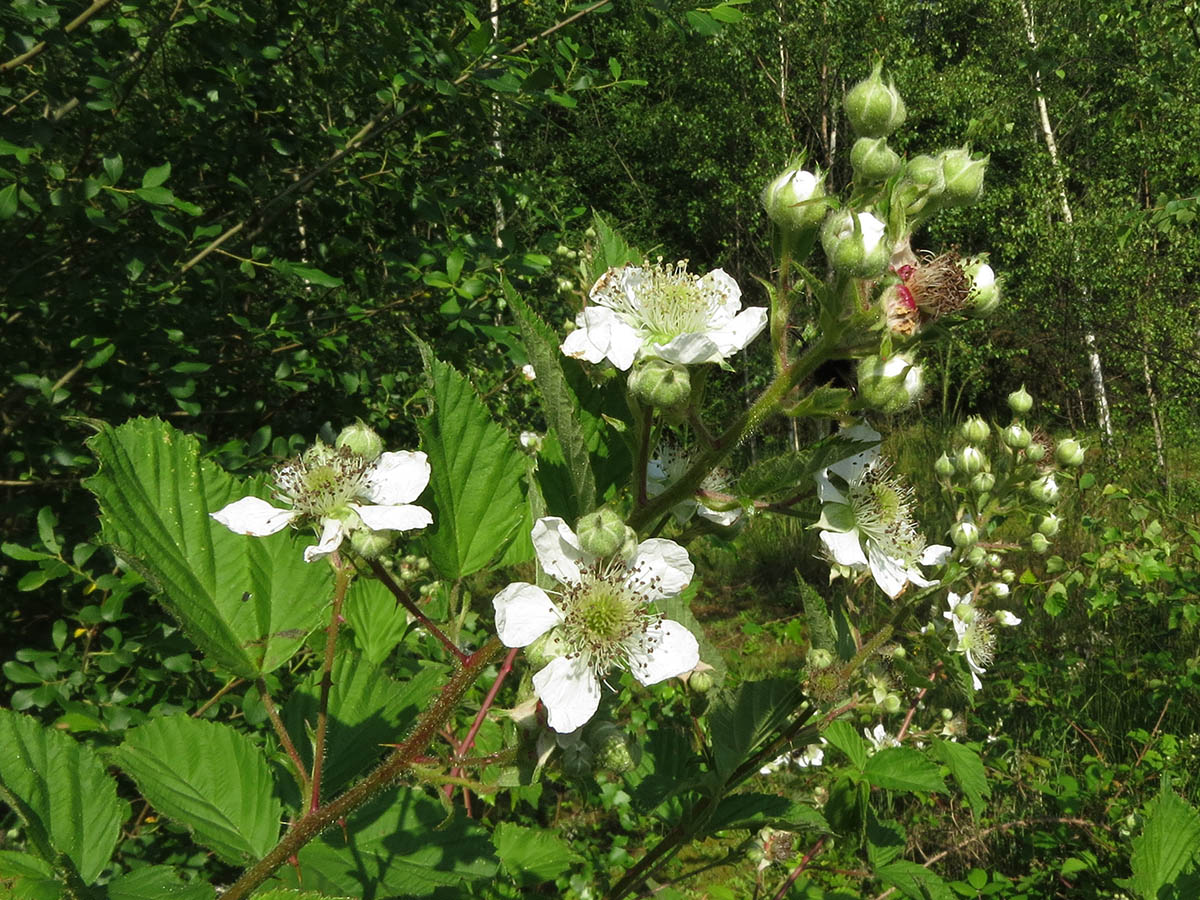
It is a high-arching species which usually occurs as single bushes or small clumps. Panicles and the inflorescence are well developed with a terminal head of flowers and ascending branches lower down, leafy nearly to the apex. The foliage is distinctly yellowish-green. The rachis is mottled reddish and green like the stem, though sometimes fairly bright reddish, slightly flexuose, with numerous hairs and sessile glands. The prickles are relatively long with broad bases, fairly numerous, declining.

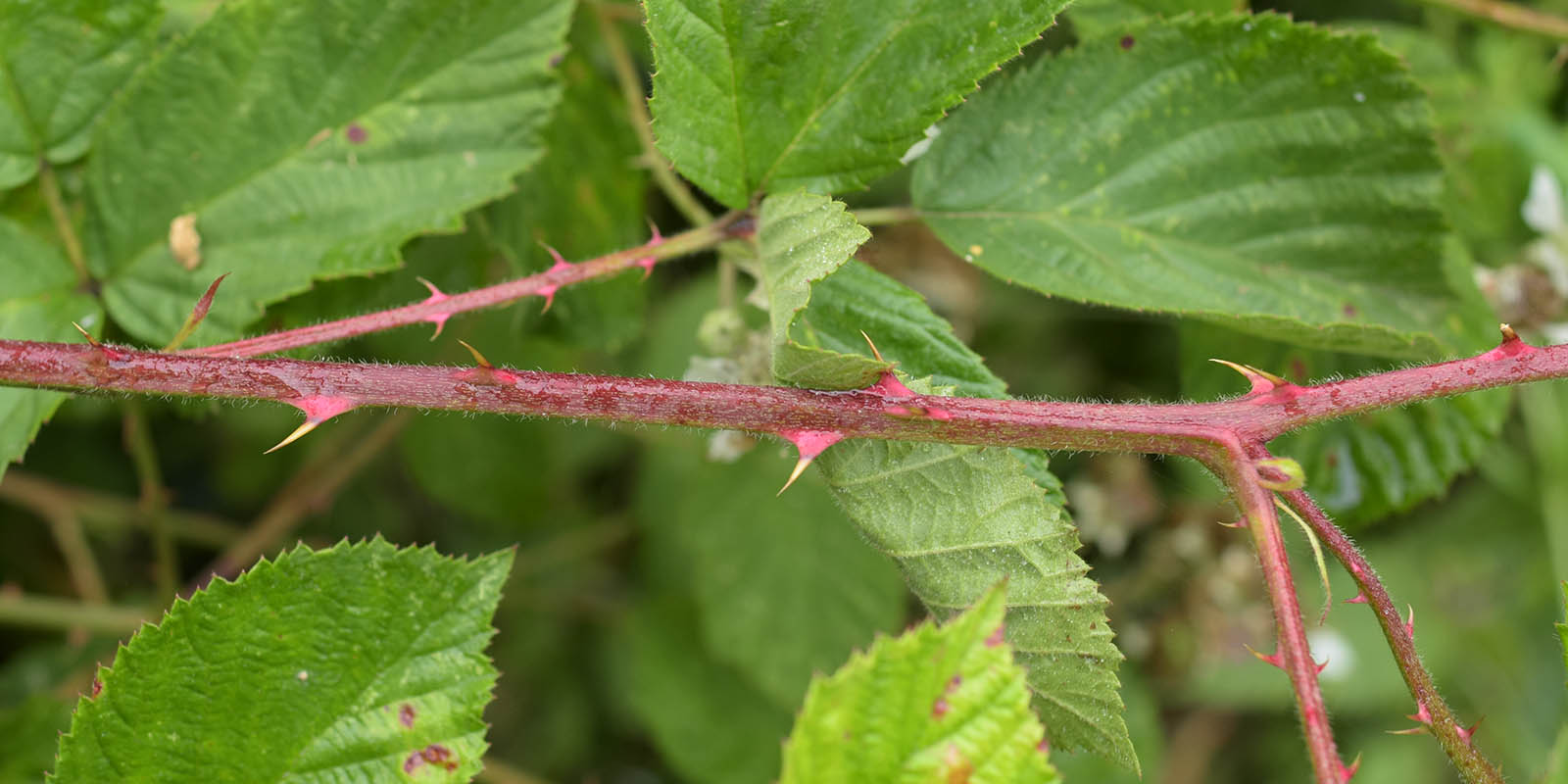
Flowers have white or slightly pale cream broadly ellpitical petals, 14-15 x 10mm; these are frequently notched at the apex, though the shape and depth of the notch is variable. The base of the petal is sharply contracted into a narrow claw, making it look almost round. This also means that the petals appear widely spaced on the flower and the long-pointed, sharp-tipped sepals are visible between; these are deeply concave with patent to reflexed tips, densely white-pubescent inside, green or somewhat whitish on the outside, with white borders. The stamens are longer than the pale green styles, and often widely spreading. Young carpels are glabrous.
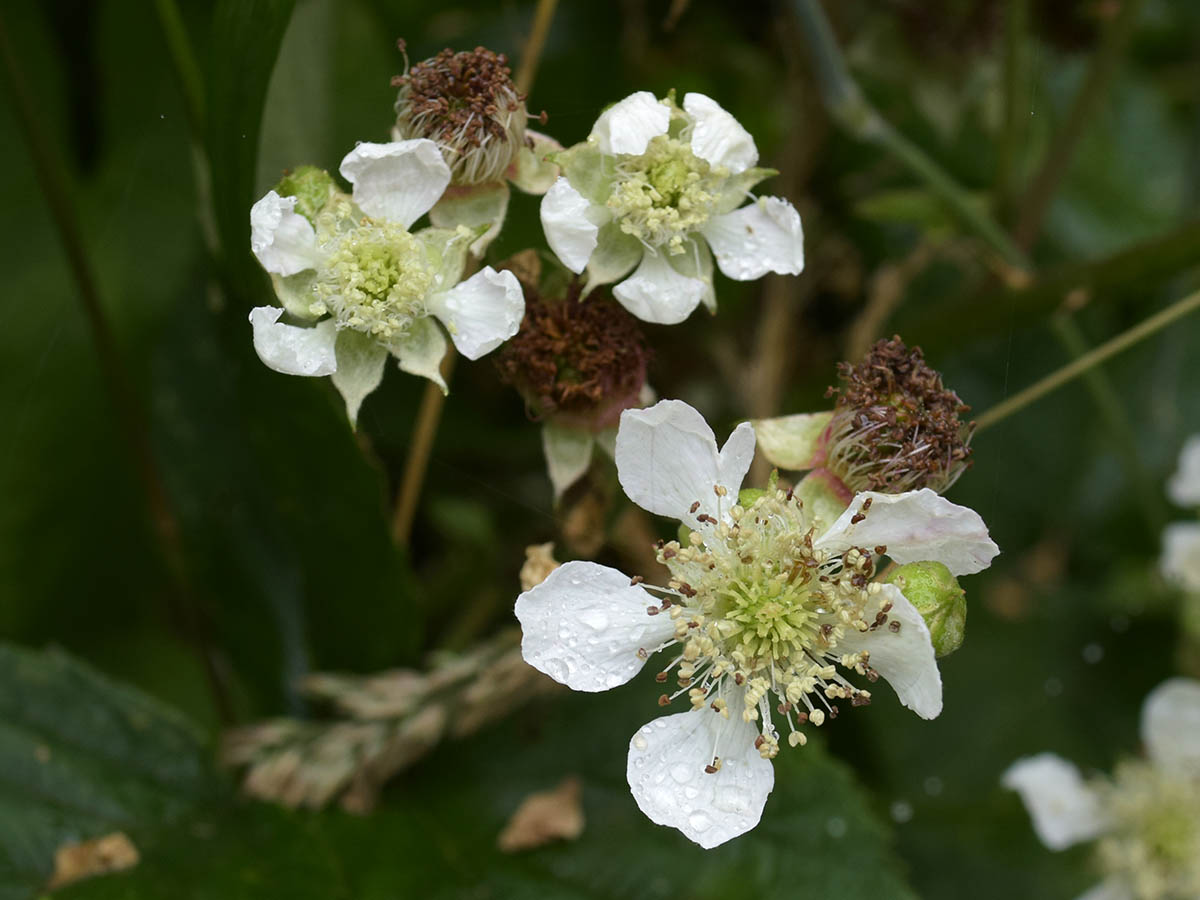
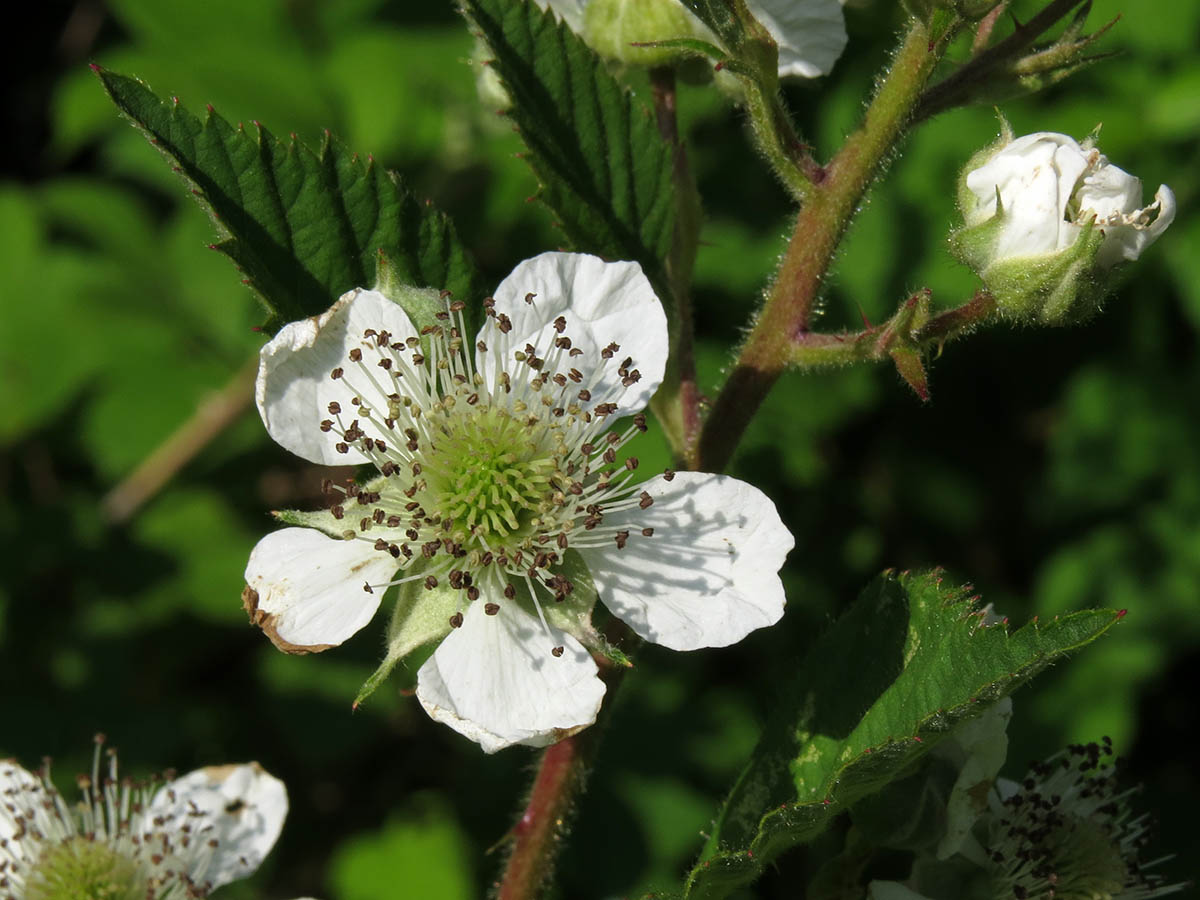
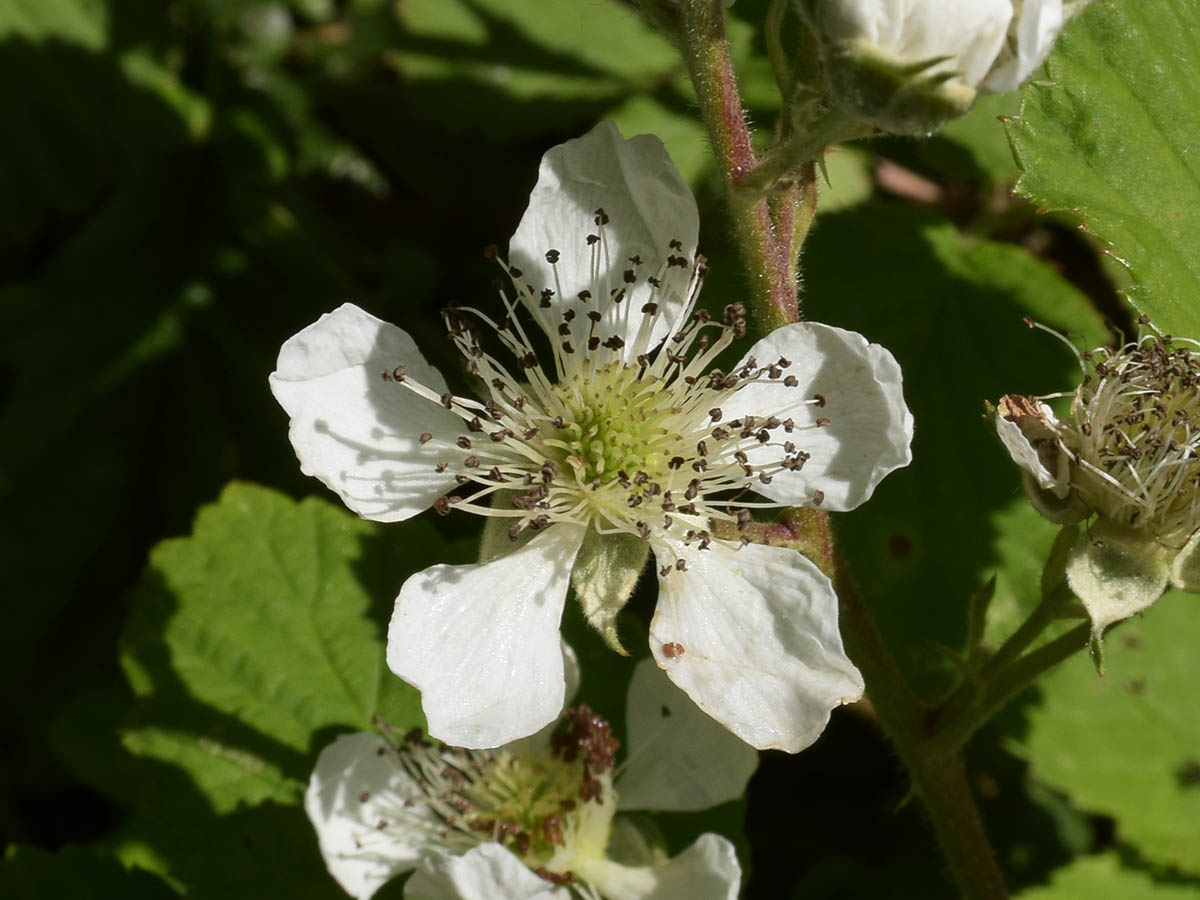
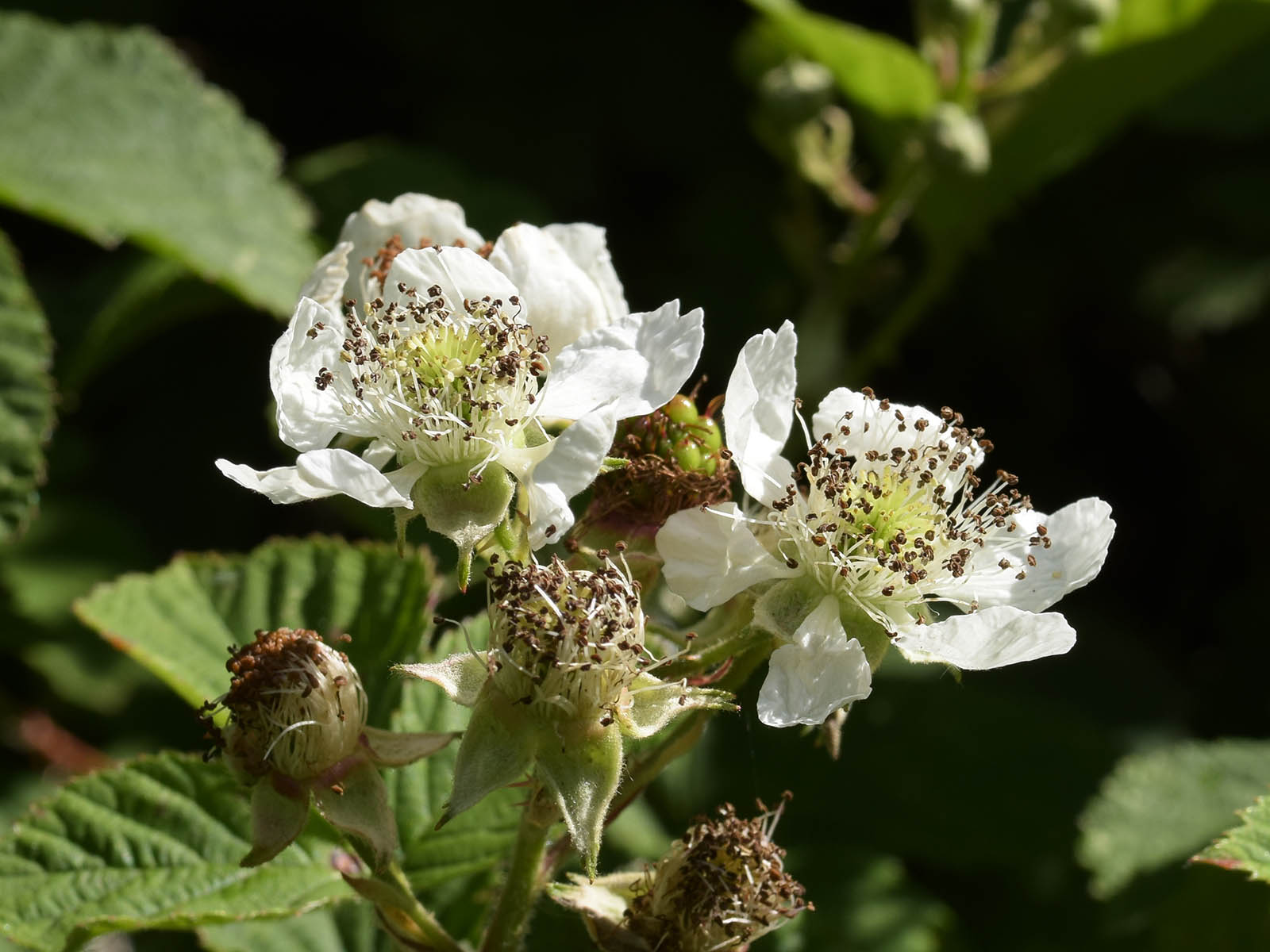
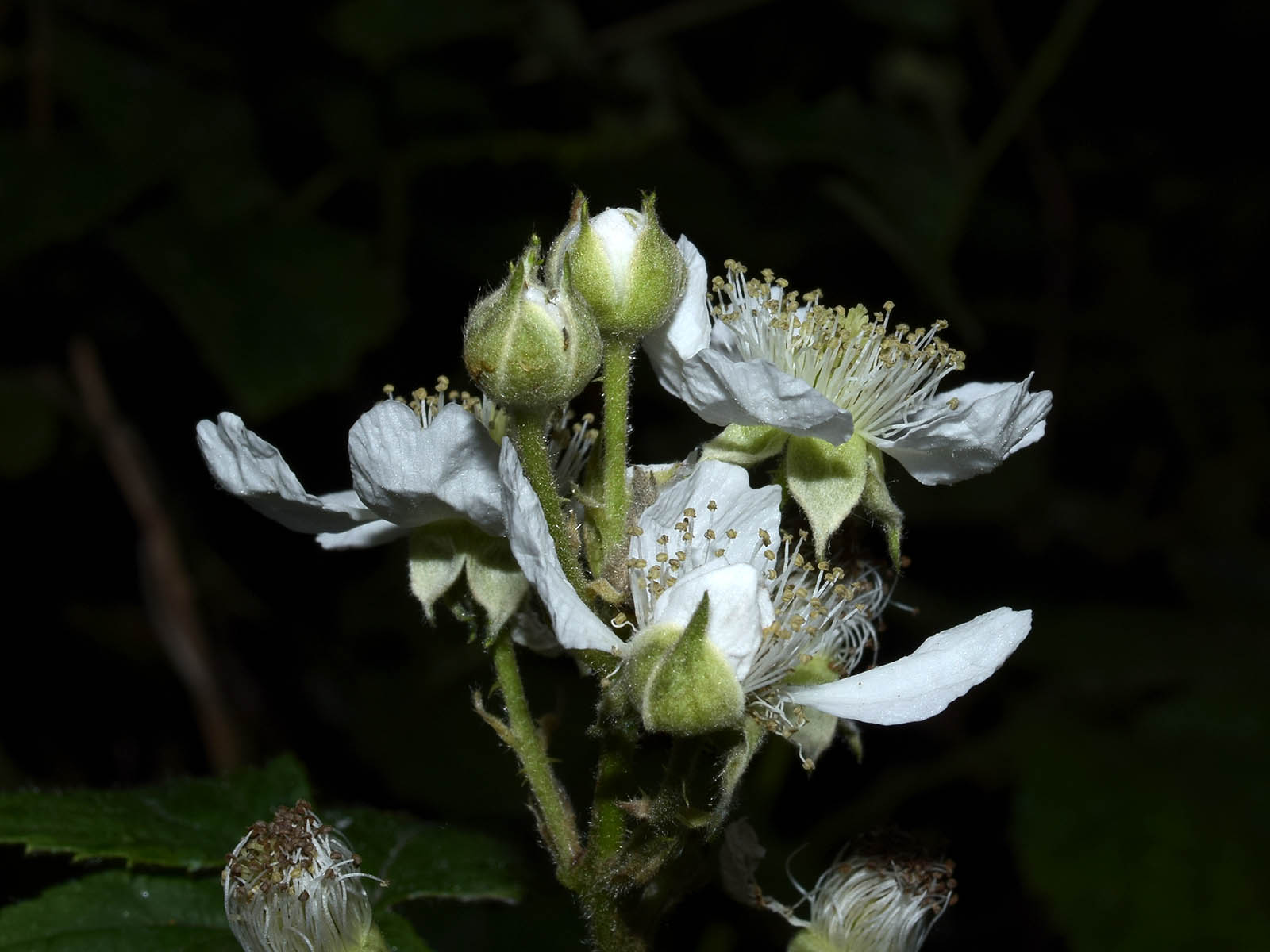
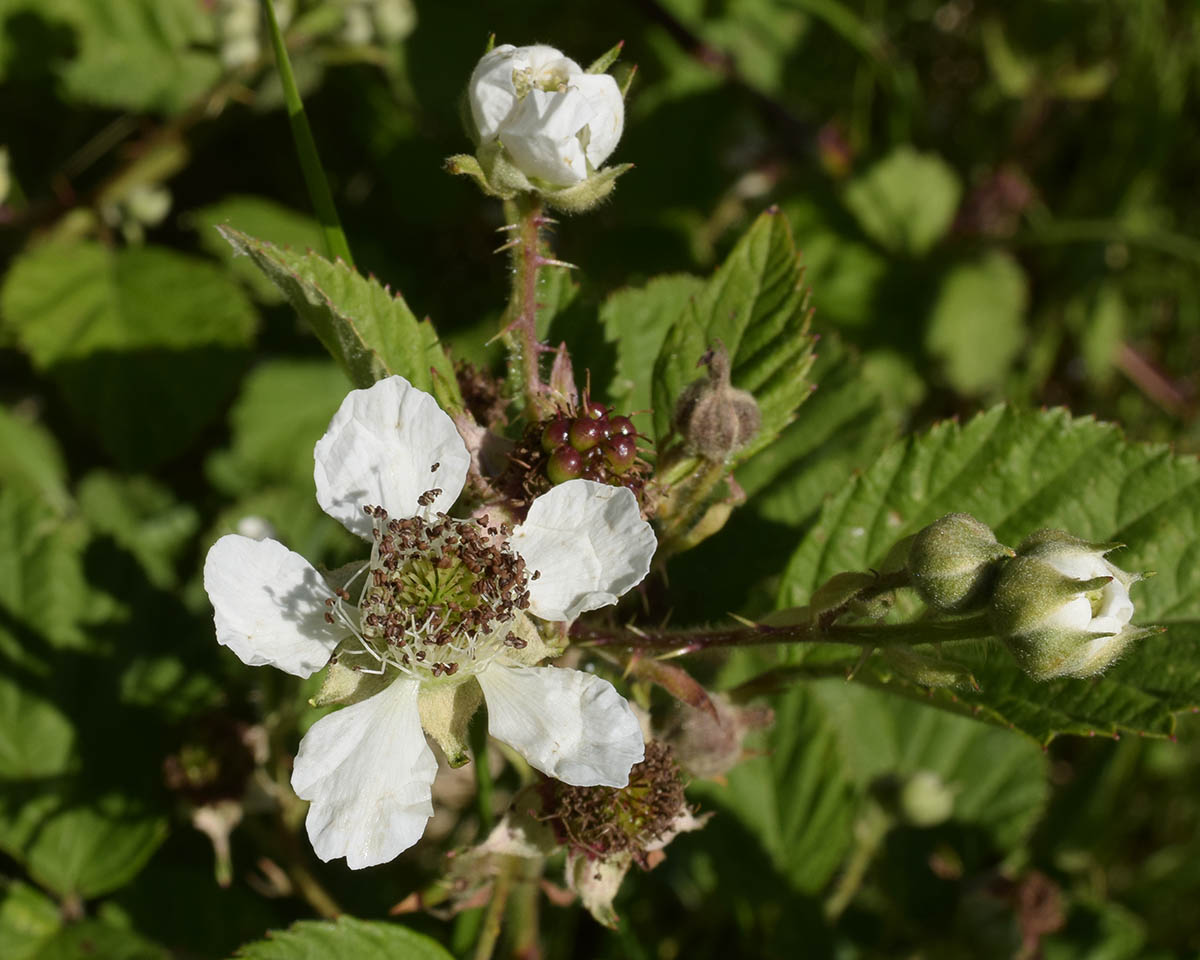

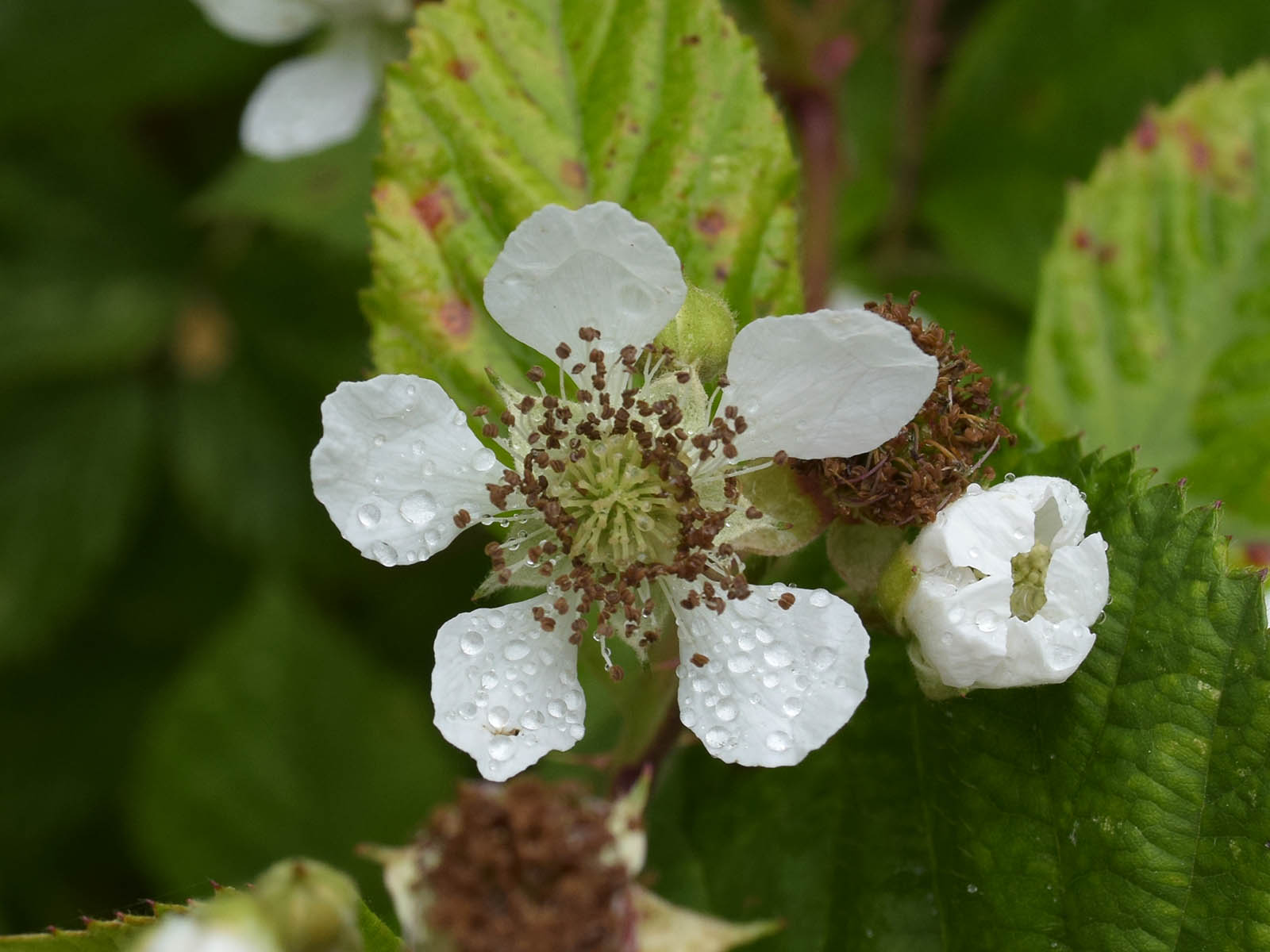
Leaves usually have five leaflets (sometimes three); the basal ones may be slightly imbricate. The leaflets are plicate or somewhat corrugated, glabrescent and rather matt in appearance above; a yellowish-green or pale greyish-green in colour. The terminal leaflet is ovate with a cordate or emarginate base and a broad, medium-length acuminate apex (which is sometimes poorly differentiated from the rest of the leaf). The margin is evenly and fairly shallowly serrate.
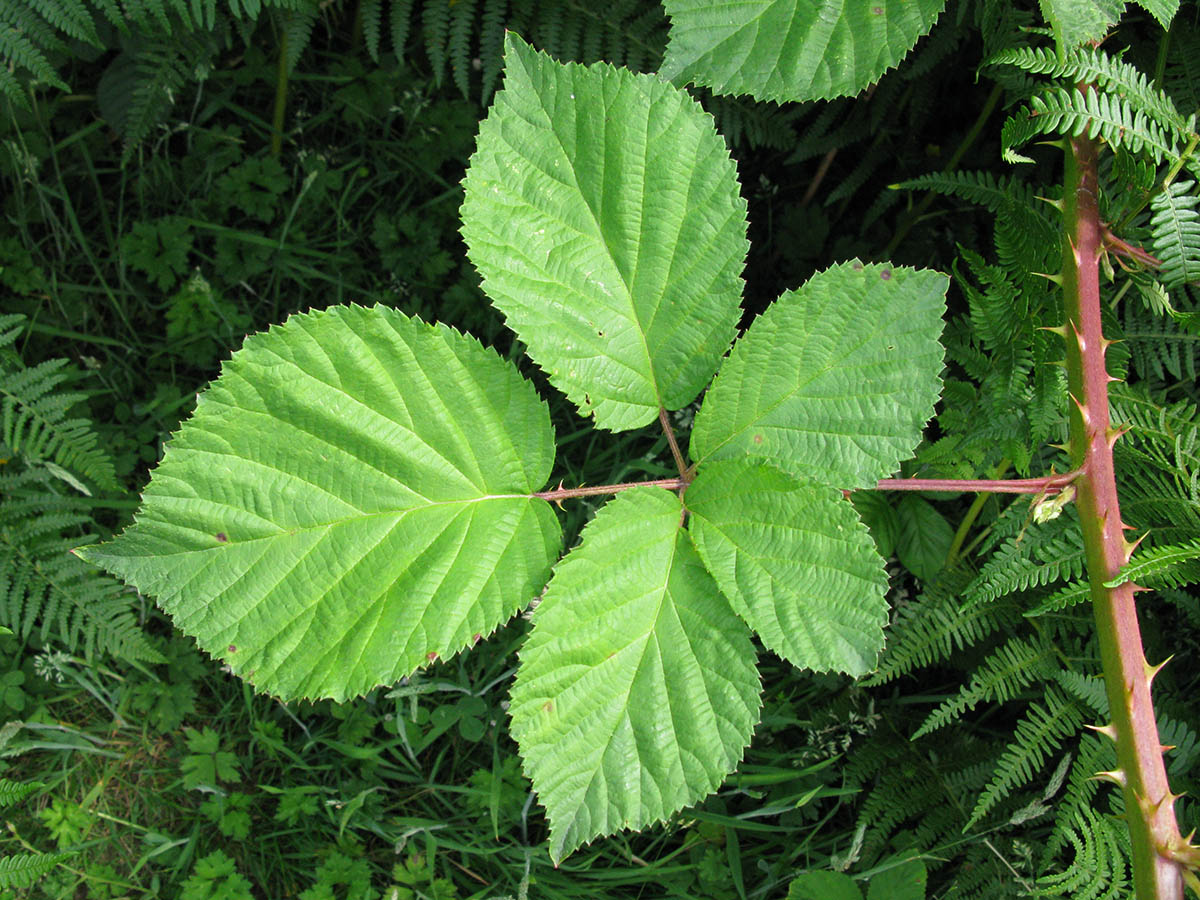
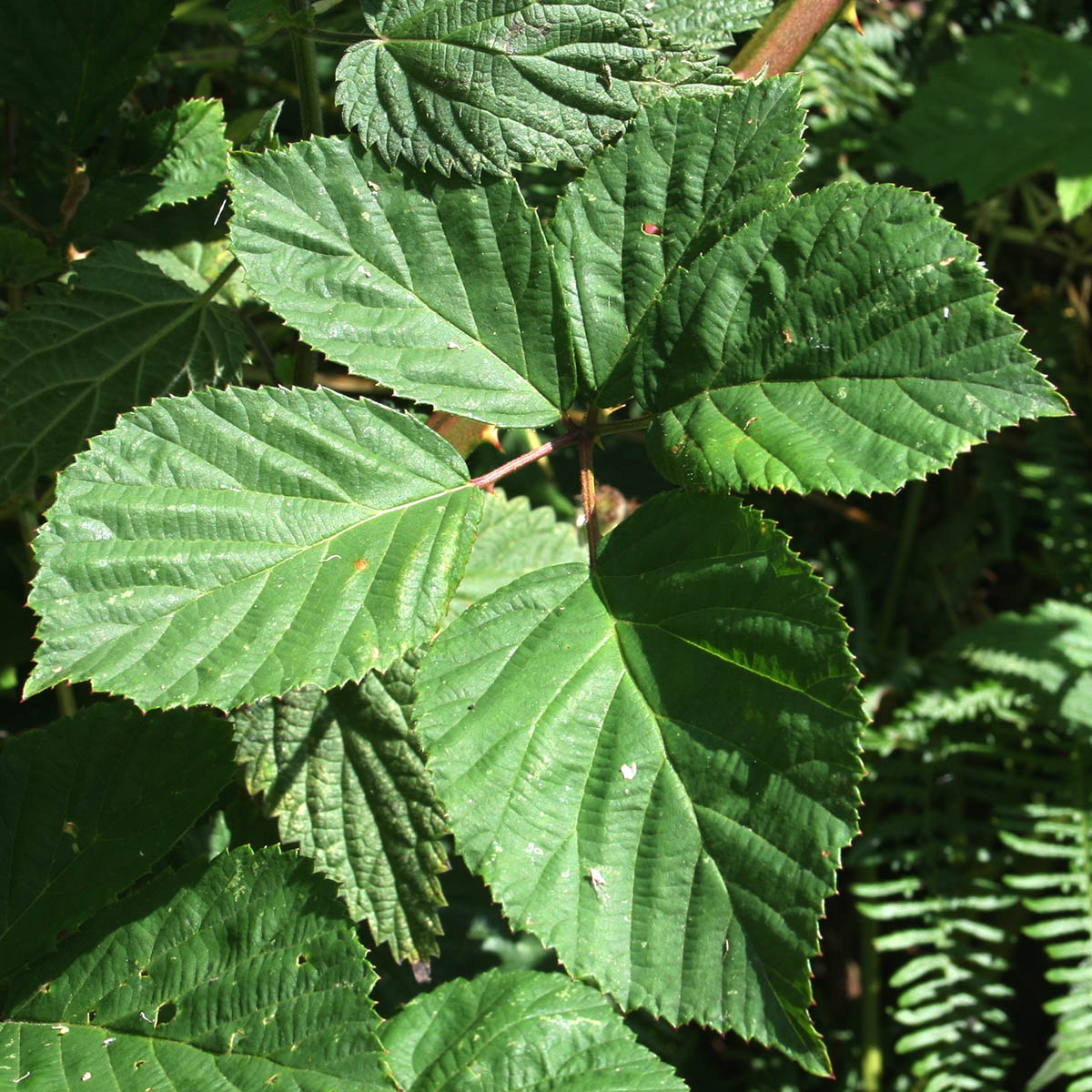
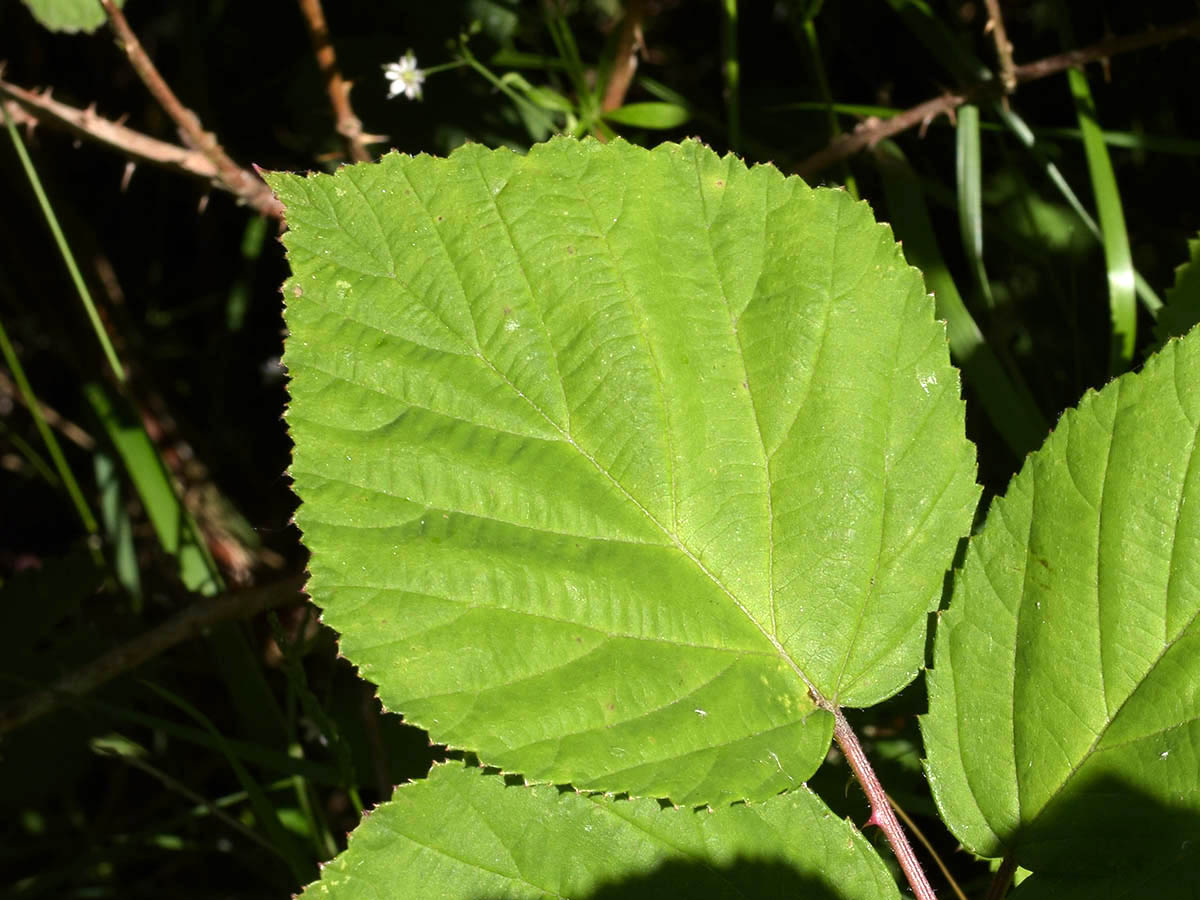
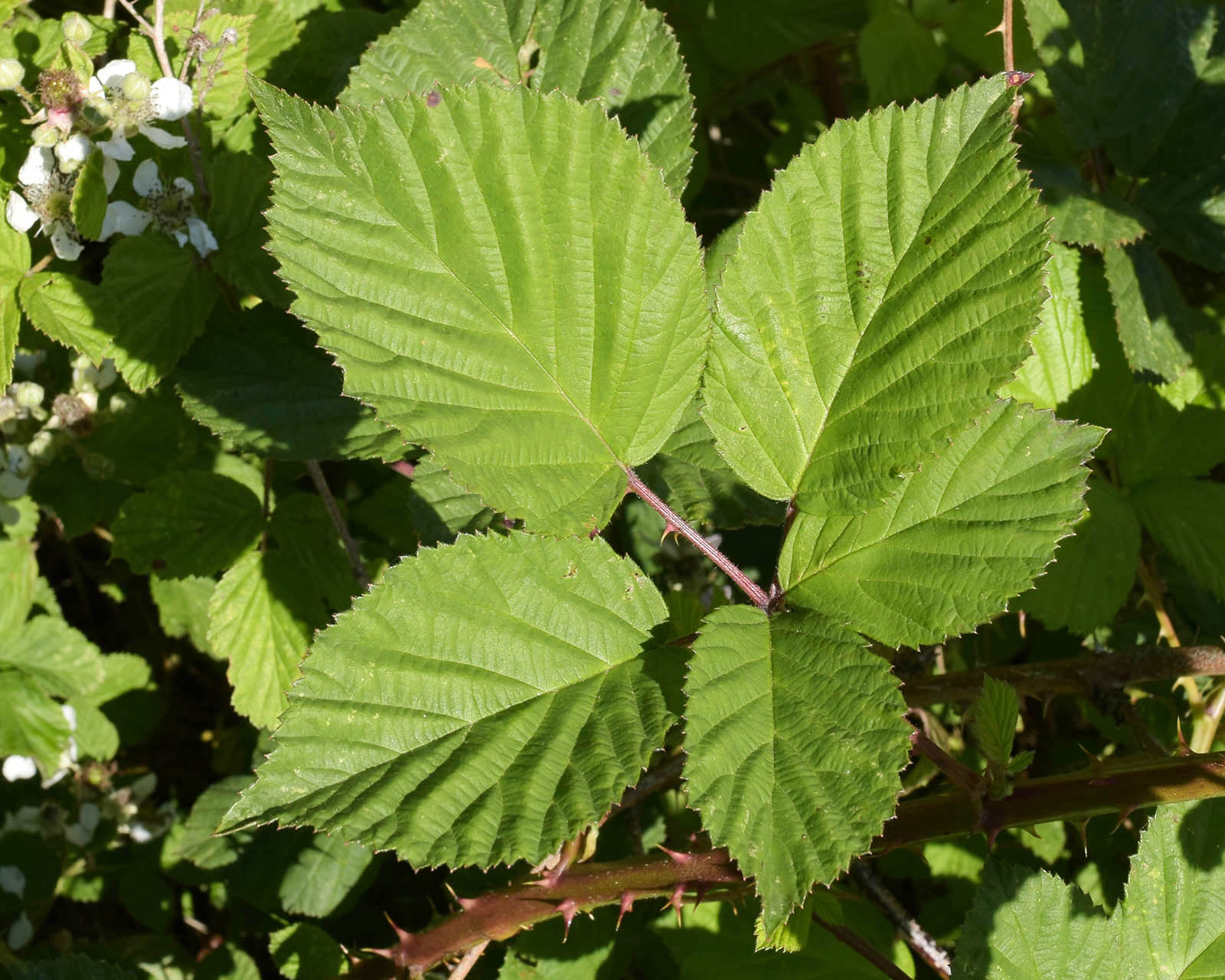
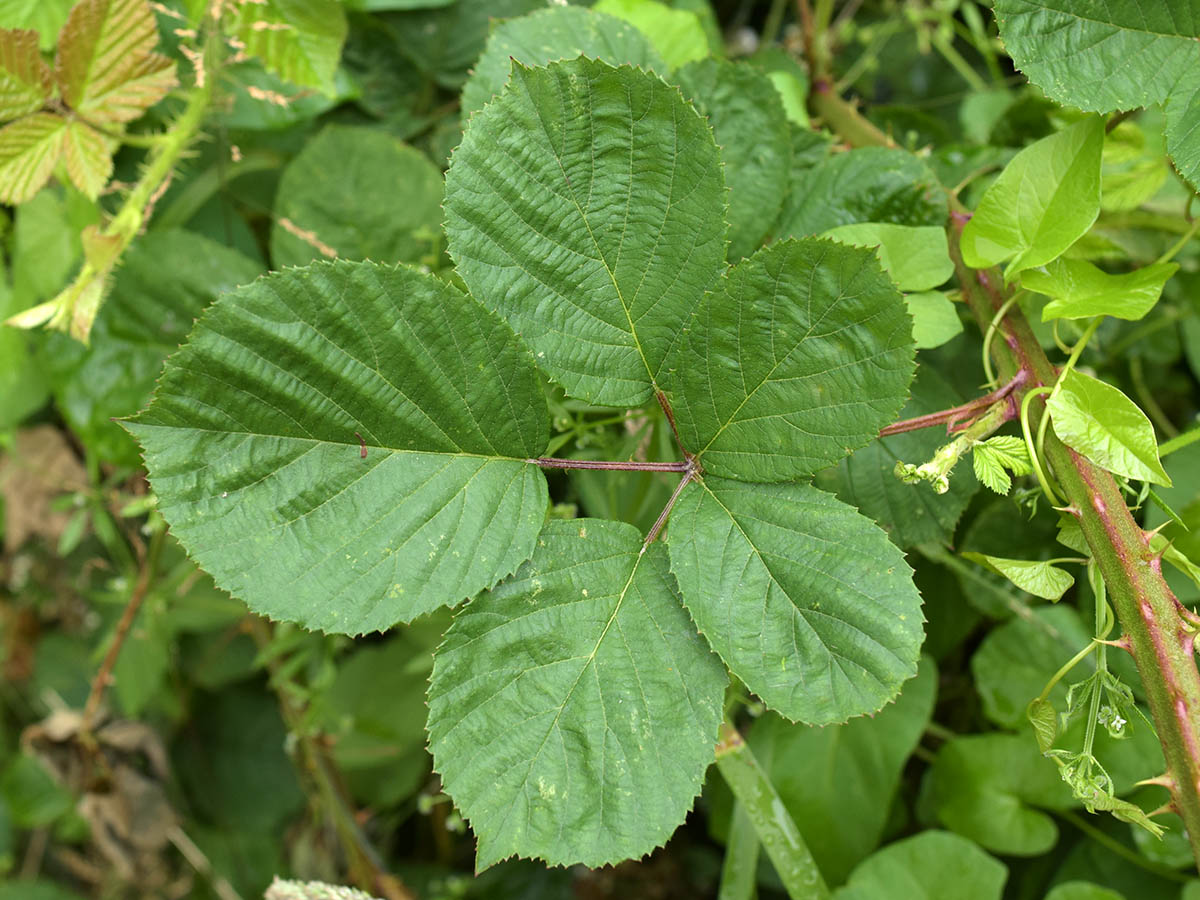
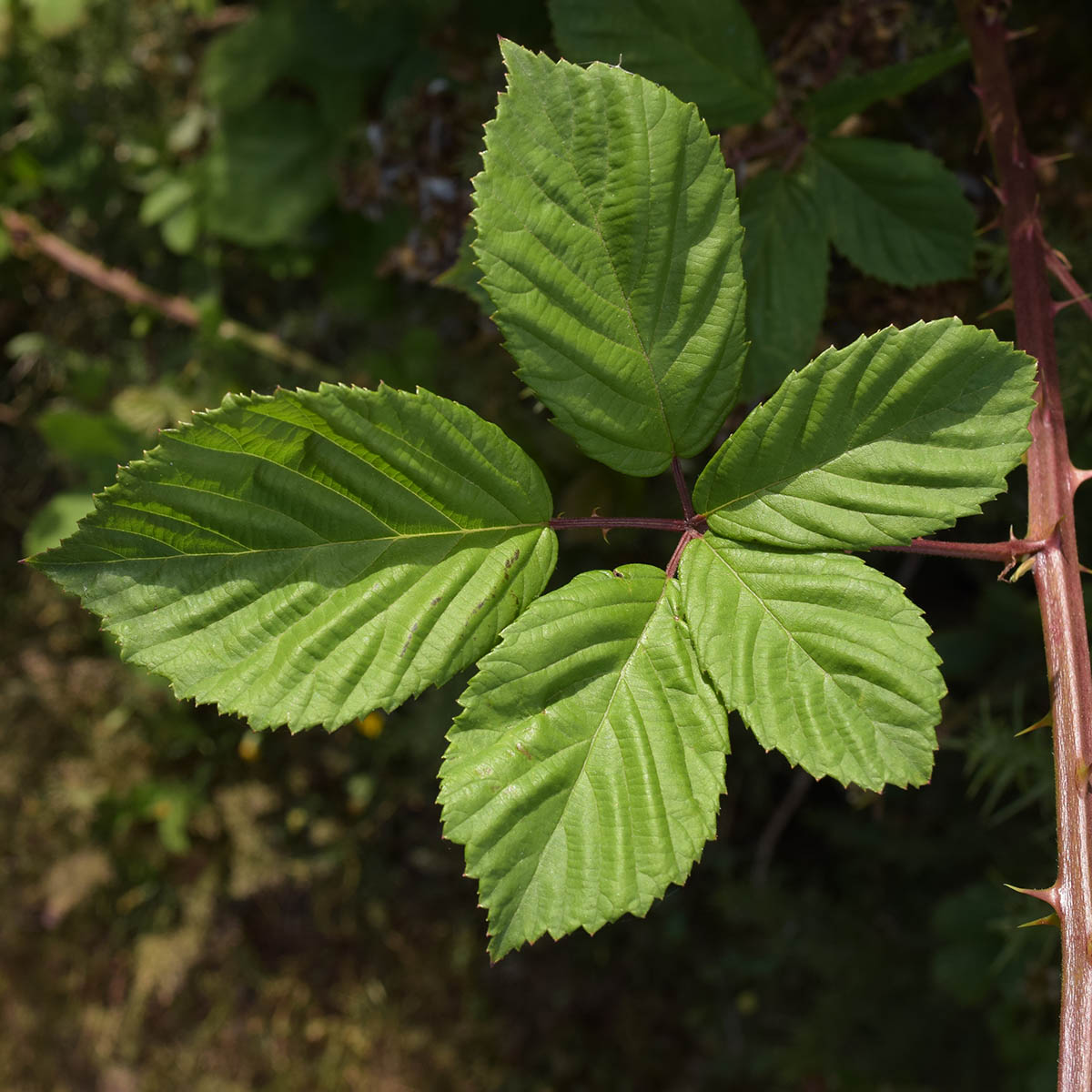
Leaflets are thinly pubescent but not felted below, though they can be grey-felted in the panicle.
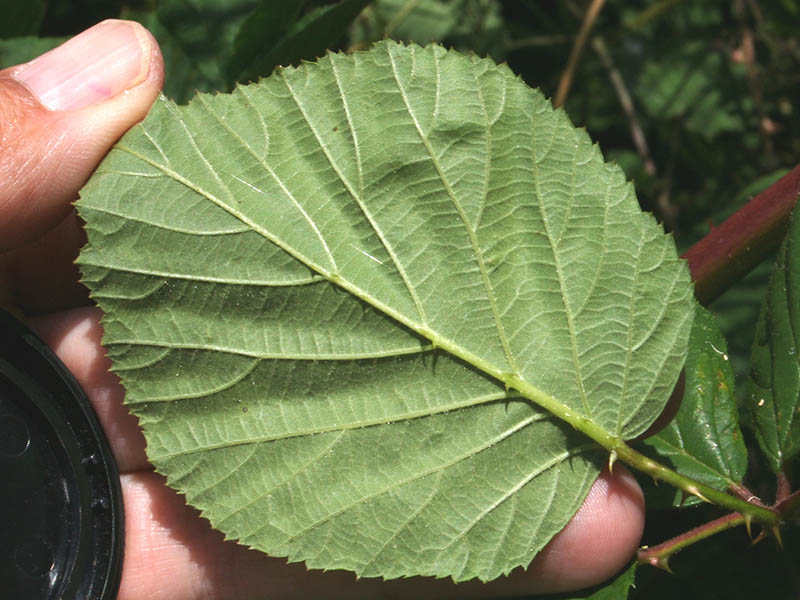
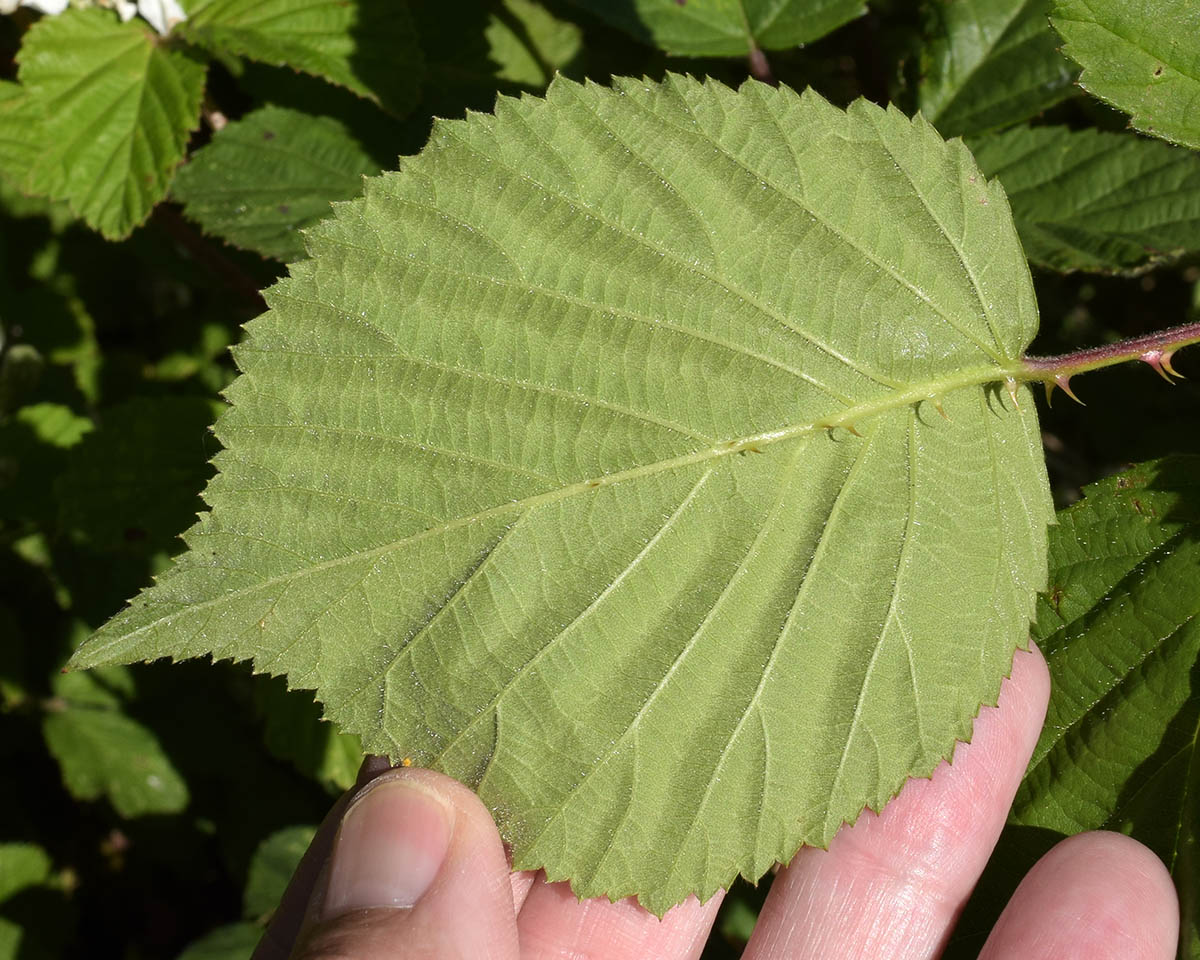

The stem is moderately robust, sharply angled with flat or shallowly furrowed faces, usually turning a distinctive pinkish red in the sun, mixed with patches of green. There are abundant sessile glands and sparse short hairs, but the stems usually become glabrous and somewhat shining. The prickles (always on the angles) are red-based and yellow-pointed, about the same or a little longer than the stem diameter, almost patent to declining. The photos below indicate that the prickles sometimes point both upwards and downwards on the same portion of stem.
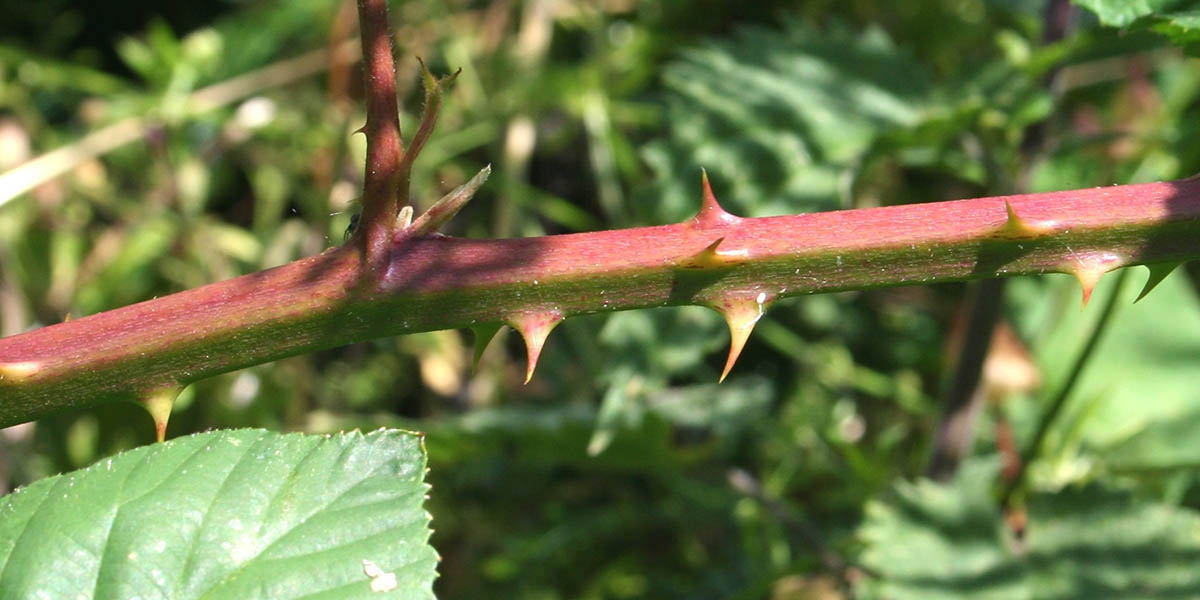
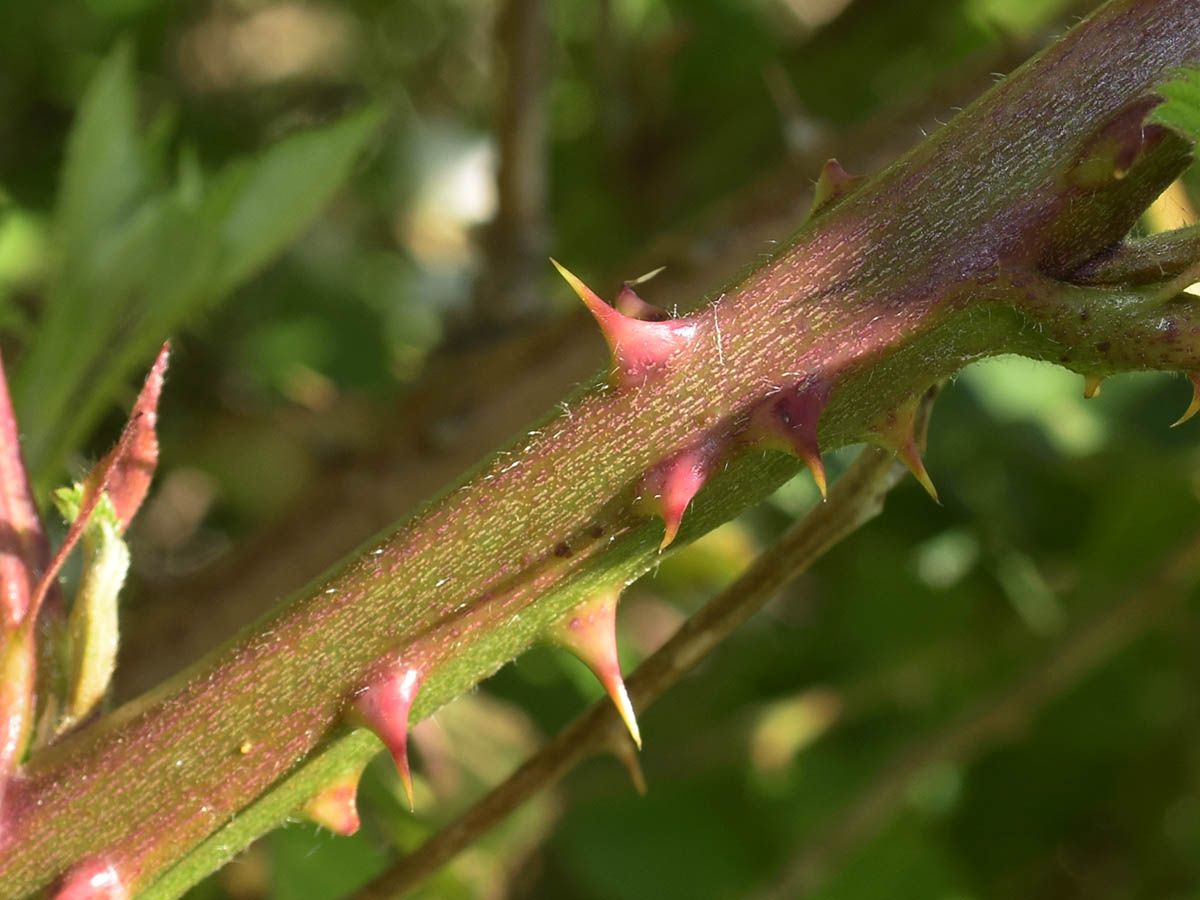
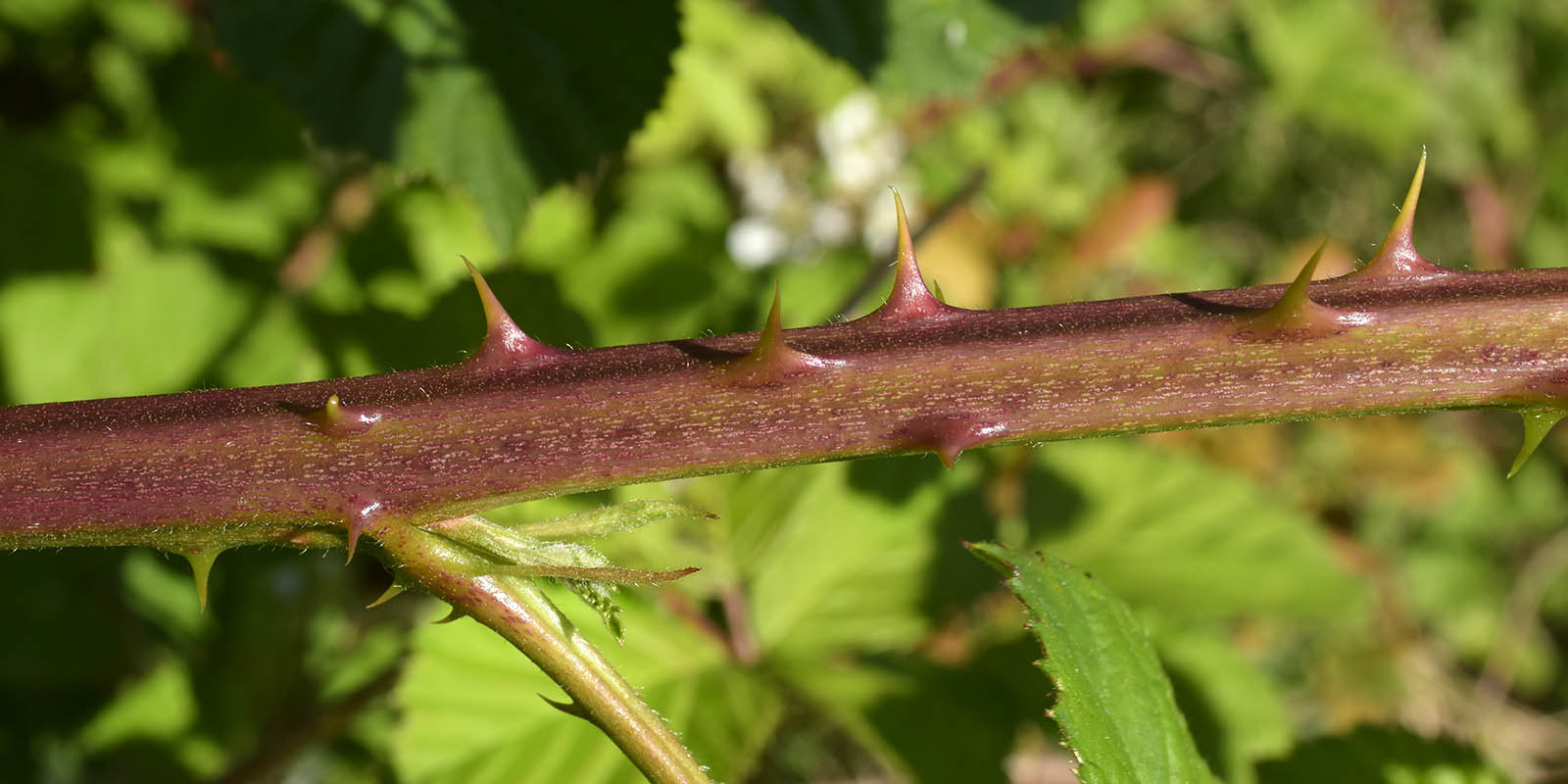
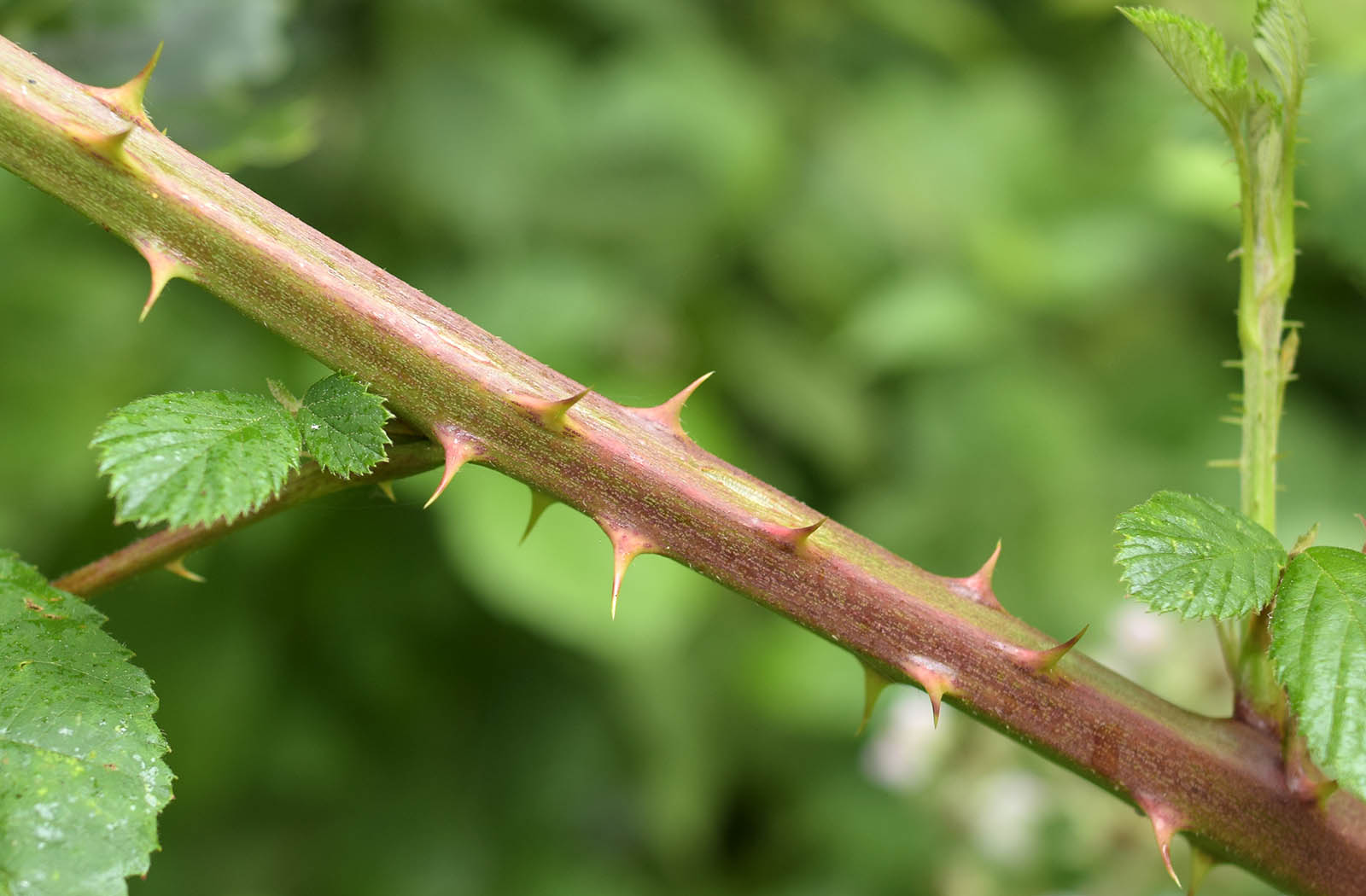
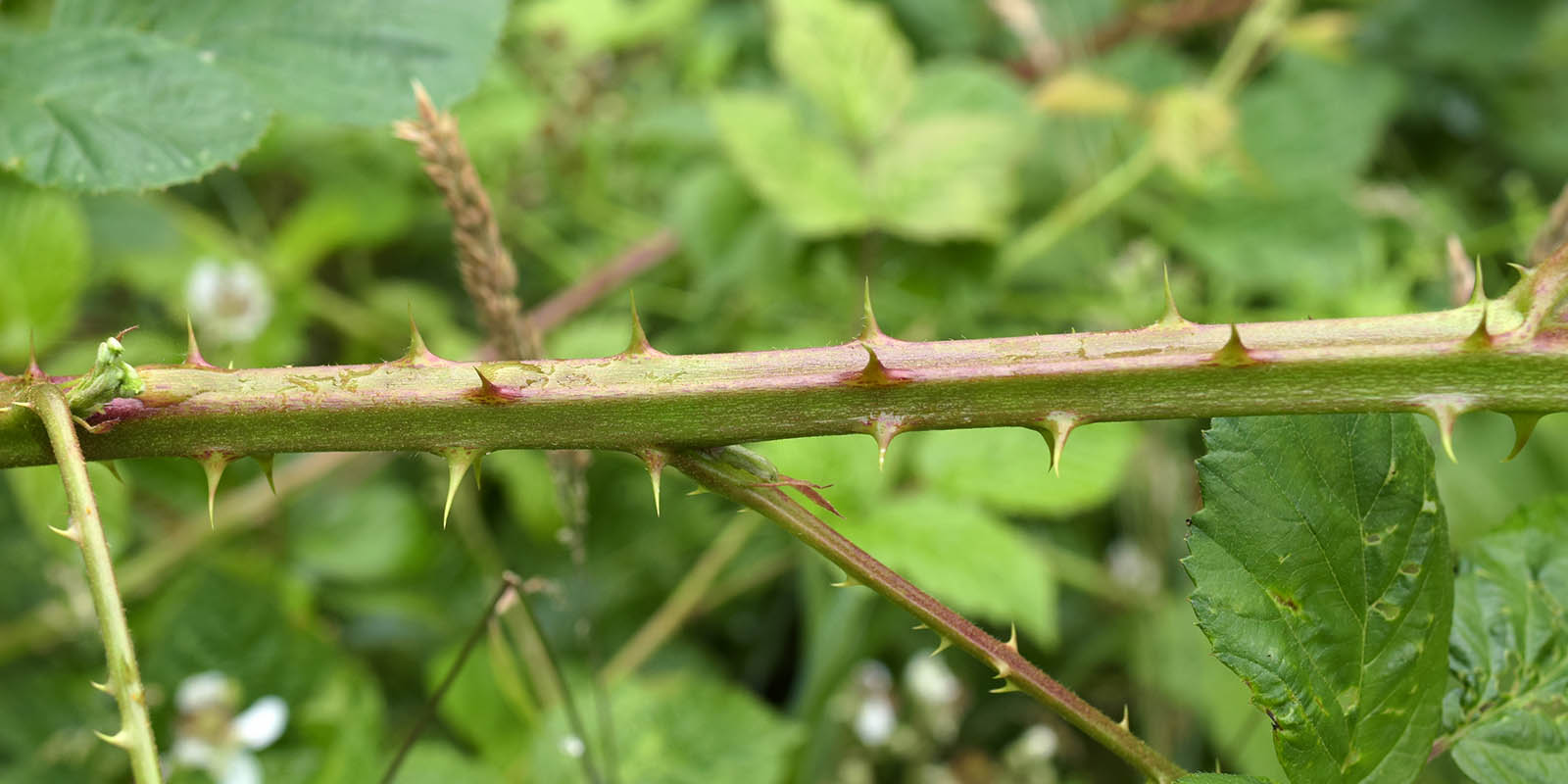

A stem in deep shade. The abundant sessile glands may be a useful feature in distinguishing from R. platyacanthus, which also has a glabrescent, eglandular stem with patent prickles.
